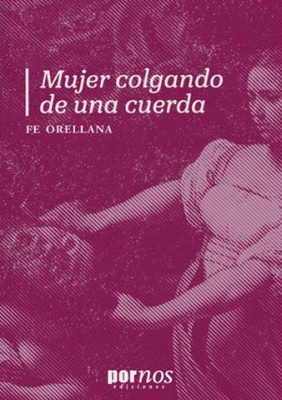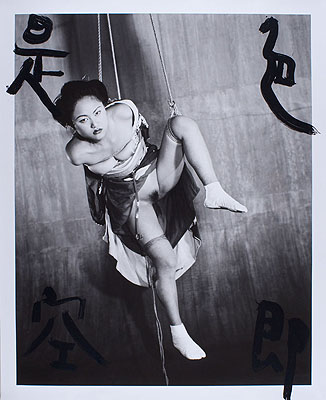
Mujer colgando de una cuerda (Woman Hanging from a Rope, PorNos, 2017), the first novel by young Chilean writer Fe Orellana, is a postmodern neopolicial, centering around Beatriz, a journalist from Santiago who works a city beat investigating corruption scandals and other dirty doings. For reasons mysterious even to her, Beatriz becomes obsessed with a homeless woman and starts on an investigation in search of something that she does not know how to define. With her colleague, Fabian, she moves about the city, described as a chessboard-style underworld where vagabonds strategically move about like rooks and bishops (it would be excessive to say pawns) and go by noir-ish pseudonyms like ‘Medusa’, ‘La Llorona’, and ‘Hawking.’
Beatriz sinks deeper and deeper into this world as she comes across clues, such as links to a high-powered family connected to banking and real estate, an experimental theatre troupe called El engranaje (The gear) and a cache of puzzling red notebooks — a wink to red herrings or to Jung? The layers of her doubt accumulate. Meanwhile, Beatriz passes the time with Fabián, experimenting with shibari, a Japanese technique of erotic bondage involving the deft use of ropes, as well as (ideally) a spiritual component. Orellana plays with the idea that shibari can create new forms of beauty with the body through the careful pulling of cords taut, but that it also contains the possibility of going dangerously too far. This mimics his narrative, which is reminiscent of both Japanese gravure and gritty pulp novels.
Fiction is, in part, the art of balancing slow accumulation of descriptive detail with quick action; Orellana balances up the tedium of episodic detail involving fast food wrappers and internet searches with accelerated episodes of intellectual discovery or gratuitous violence. Whether or not he gets this balance right may come down to the reader’s personal preferences regarding the shibari of narrative technique; as ever, one remembers that reading is a sensual activity.
With casual language and the tone of a thriller, the novel reads cleanly; but structure, not language, is where its interest lies. A deconstructed crime novel, it suggests that unveiling the occult meaning behind appearances is just as important as tracking down the villain—a trope of English romanticism Orellana takes in quite another direction.
Getting further and further with getting nowhere—the ennui of this search, the stultifying nothing-happening, might even have been carried further, into sequences of stream-of-consciousness. But perhaps that would be a different novel. Already, Beatriz’s desperation and paranoid logic are stretched beyond their limits, possibly always illusory. Do the doodles of arrows, circles and lines that appear in the notebooks trace human faces? Who is the pursuer, whom the pursued? And at what point does the role one plays become reality? The plot is ‘incredible’, intentionally so. But is this story a far-fetched reality, dream or erotic hallucination?
The pop—and pulp—give the book a certain lightness, helped along by the trendy meta-references to Japanese photographer Nobuyoshi Araki and Sartre’s play El engranaje. Postmodern tropes abound in which everything might be precisely the opposite of what it seems. Ropes, gears, and other mechanisms abound, calling constant attention to the way that the plot itself works. Everything is interlocked—or bound—together, though the metaphors can seem mixed. (Ropes or gears, after all? Is this an evening of shibari or bondage inside a narrative machine?) There are, in fact, so many postmodern nods and metafictional layers that the emotional stratum remains somewhat neglected. Beatriz herself does not really get an inner life, and the real ‘occult’ of human emotions is not explored.
Nevertheless, this is a quick, entertaining read, a glimpse into how the glamorous logic of Séptimo Circle-style police novels might be mapped onto the unglamorous city, and into how a spiritual search might accompany the physical attempt to track down a criminal. If there is a certain quality of doubling, a certain déjà vu to the tropes used, genres subverted and dramatic traps sprung, this may be a trait epidemic to all books written in a ‘meta’ mode, which rely on fundamental and repeating patterns. For some reason I think of those lines by Kenneth Rexroth, in ‘Lyell’s Hypothesis Again:’ ‘And what might have been, / and what might be, fall equally / away with what is, and leave / only these ideograms / printed on the immortal / hydrocarbons of flesh and stone.’

Roped into Doubt was originally published in Anomaly on Medium, where people are continuing the conversation by highlighting and responding to this story.
